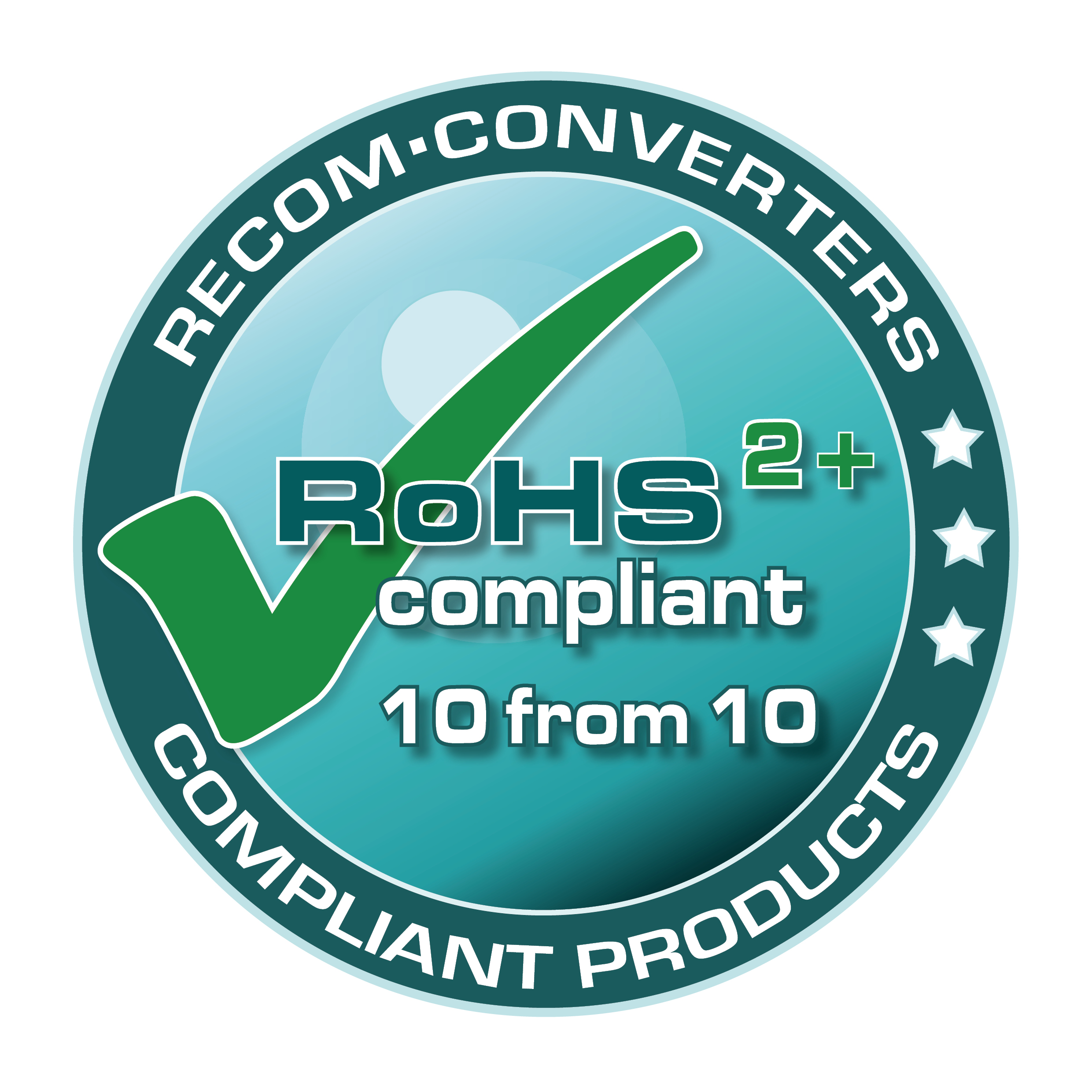RECOM products are now RoHS2 including 2015/863/EU certified
The RoHS Directive was updated under a new EU Directive 2011/65/EU and is now part of the CE marking requirement. Therefore, since January 2013, all CE-marked products must include RoHS2 in their Declaration of Conformity.
 In 2015, the EC published a recast (RoHS2.1) proposing four additional Pthalate substances (DEHP, BBP, DBP and DIBP). Member States have until 2019 (2021 for medical products) to amend their national laws to comply. RECOM, aware of this publication and introduction date, already started the re-qualification process.
In 2015, the EC published a recast (RoHS2.1) proposing four additional Pthalate substances (DEHP, BBP, DBP and DIBP). Member States have until 2019 (2021 for medical products) to amend their national laws to comply. RECOM, aware of this publication and introduction date, already started the re-qualification process.
The only certain way to prove the RoHS compliance of products, e.g. that are fully RoHS2.1 compliant, is to do a full chemical analysis. Therefore, we have started the RoHS2.1 re-certification process to include DEHP, BBP, DBP and DIBP in our RoHS test reports. We will re-test the remaining industrial and medical products in our portfolio so that we can offer certified DEHP, BBP, DBP and DIBP-free RECOM products in good time for our customers, well before the date of introduction. So far, we have not discovered any of these new restricted substances in quantities that exceed the proposed limits in any of the products tested, so there should be no need for customers to change their part numbers, BOM or stock.
RoHS (Restriction of Hazardous Substances) is not to be confused with REACH (Registration, Evaluation and Authorisation of CHemicals). The RoHS directive is designed to protect the environment from hazardous chemicals in products and the banned substances are strictly limited to less than 0.1% by weight (0.01% for Cadmium) in the affected products. By comparison, the REACH SVHC list (Substances of Very High Concern) contains many more chemicals, most of which are known or suspected to cause cancer or birth defects if absorbed in high quantities. So REACH is more to protect the workers manufacturing the products than the end user. The other differences are that REACH also applies to chemicals in their pure form (not part of a product) and, despite the risks, small quantities are still allowed to be present in products. RECOM’s products also conform to the REACH regulation as RECOM doesn’t use chemicals in large quantities, either in the manufacturing or end product.

The only certain way to prove the RoHS compliance of products, e.g. that are fully RoHS2.1 compliant, is to do a full chemical analysis. Therefore, we have started the RoHS2.1 re-certification process to include DEHP, BBP, DBP and DIBP in our RoHS test reports. We will re-test the remaining industrial and medical products in our portfolio so that we can offer certified DEHP, BBP, DBP and DIBP-free RECOM products in good time for our customers, well before the date of introduction. So far, we have not discovered any of these new restricted substances in quantities that exceed the proposed limits in any of the products tested, so there should be no need for customers to change their part numbers, BOM or stock.
RoHS (Restriction of Hazardous Substances) is not to be confused with REACH (Registration, Evaluation and Authorisation of CHemicals). The RoHS directive is designed to protect the environment from hazardous chemicals in products and the banned substances are strictly limited to less than 0.1% by weight (0.01% for Cadmium) in the affected products. By comparison, the REACH SVHC list (Substances of Very High Concern) contains many more chemicals, most of which are known or suspected to cause cancer or birth defects if absorbed in high quantities. So REACH is more to protect the workers manufacturing the products than the end user. The other differences are that REACH also applies to chemicals in their pure form (not part of a product) and, despite the risks, small quantities are still allowed to be present in products. RECOM’s products also conform to the REACH regulation as RECOM doesn’t use chemicals in large quantities, either in the manufacturing or end product.
